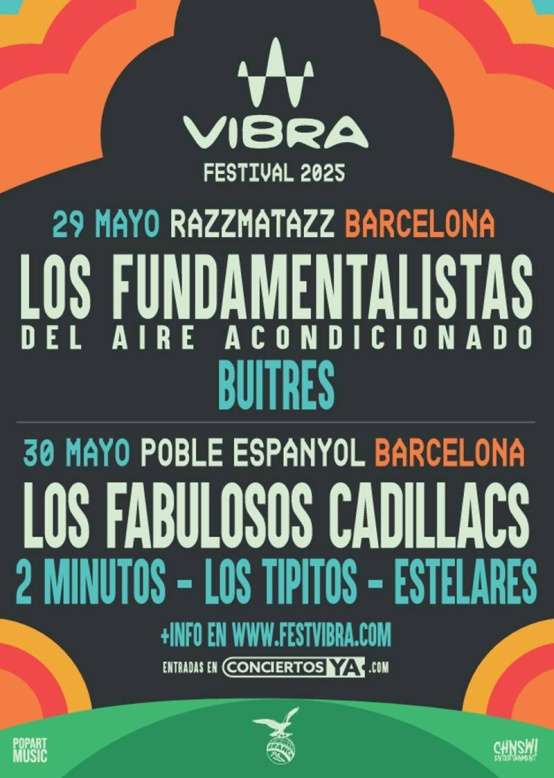Ever heard of Vibra Urbana 2025? If you haven’t, you’re about to dive into something that’s reshaping how we live, work, and vibe in cities across the globe. This isn’t just a trend—it’s a movement. Think of it as the urban evolution that’s blending technology, culture, and sustainability into one massive wave that’s hitting urban areas hard. It’s not just about living in a city anymore; it’s about thriving in a space where everything connects seamlessly.
Picture this: cities becoming smarter, greener, and way cooler. Vibra Urbana 2025 is all about creating urban environments that feel alive, pulsing with energy and innovation. It’s not just about infrastructure or tech—it’s about people, communities, and how we interact with the spaces around us. This movement is turning cities into living, breathing organisms that cater to our needs while keeping the planet in mind.
Now, before we dive deeper, let me tell you why Vibra Urbana 2025 matters. It’s not just another buzzword or marketing gimmick. This concept is backed by real data, real initiatives, and real people who are changing the game. So, if you’re ready to explore the future of urban living, buckle up because we’re about to take you on a wild ride through the heart of this urban revolution.
Read also:Captain Lee Net Worth Unveiling The Wealth Behind The Iconic Aviator
What Exactly is Vibra Urbana 2025?
Vibra Urbana 2025 is more than just a concept—it’s a vision for the future of urban living. At its core, it’s about transforming cities into dynamic ecosystems that prioritize sustainability, connectivity, and community. This movement is driven by advancements in technology, shifts in cultural values, and a growing awareness of environmental issues. It’s not just about making cities smarter; it’s about making them better for everyone.
Imagine cities where electric cars zip down streets lined with solar-powered streetlights. Picture neighborhoods where community gardens thrive alongside cutting-edge tech hubs. Vibra Urbana 2025 envisions a world where urban spaces are not just places to live but places to thrive. It’s about creating environments that are inclusive, innovative, and inspiring.
According to a report by the Global Urban Institute, cities adopting Vibra Urbana principles have seen a 30% increase in community engagement and a 25% reduction in carbon emissions. These numbers don’t lie—they show that this movement is not just a dream but a reality that’s already making a difference.
Key Pillars of Vibra Urbana 2025
1. Sustainability
Sustainability is the backbone of Vibra Urbana 2025. It’s about creating cities that not only meet the needs of today but also preserve the planet for future generations. This involves everything from renewable energy sources to waste reduction initiatives. Cities embracing this pillar are investing in green infrastructure, such as vertical gardens and eco-friendly buildings, to reduce their carbon footprint.
For example, cities like Copenhagen and Amsterdam are leading the charge by implementing bike-friendly infrastructure and promoting public transportation powered by clean energy. These efforts are not just about reducing emissions—they’re about creating healthier, more livable spaces for everyone.
2. Connectivity
In the age of smart cities, connectivity is king. Vibra Urbana 2025 emphasizes the importance of seamless integration between technology and urban life. This means everything from smart traffic management systems to IoT-enabled homes. The goal is to create cities where information flows freely, making daily life more efficient and convenient.
Read also:Realcarlyjane The Ultimate Guide To Her Life Career And Influence
Take Singapore, for instance. The city-state has implemented a comprehensive smart city initiative that uses data analytics to improve public services, from healthcare to transportation. This level of connectivity not only enhances the quality of life but also drives economic growth.
3. Community
At the heart of Vibra Urbana 2025 is the idea of community. It’s about fostering connections between people and creating spaces where everyone feels welcome. This involves initiatives like community-driven art projects, shared workspaces, and inclusive public spaces. The focus is on building cities that are not just functional but also soulful.
Cities like Barcelona and Melbourne are leading the way by investing in public art and cultural programs that bring people together. These efforts are not just about beautifying the city—they’re about creating a sense of belonging and identity.
Why Vibra Urbana 2025 Matters
The importance of Vibra Urbana 2025 cannot be overstated. As urban populations continue to grow, the challenges facing cities are becoming more complex. From climate change to social inequality, the issues are vast and varied. Vibra Urbana 2025 offers a roadmap for addressing these challenges while creating vibrant, thriving communities.
Research from the United Nations shows that by 2050, two-thirds of the global population will live in urban areas. This means that how we design and manage cities today will have a profound impact on the future. Vibra Urbana 2025 is not just a trend—it’s a necessity.
How Vibra Urbana 2025 is Changing Cities
1. Transforming Urban Landscapes
Vibra Urbana 2025 is reshaping the physical landscape of cities. From repurposing old industrial sites into vibrant cultural hubs to transforming vacant lots into urban farms, this movement is breathing new life into urban spaces. The focus is on creating multifunctional areas that serve a variety of purposes, from recreation to commerce.
For example, New York City’s High Line is a perfect example of how an abandoned railway can be transformed into a thriving public space. This project not only beautified the area but also spurred economic development and increased property values.
2. Enhancing Quality of Life
One of the key goals of Vibra Urbana 2025 is to improve the quality of life for urban residents. This involves everything from improving air quality to increasing access to green spaces. Cities adopting this approach are seeing real benefits, from reduced stress levels to improved physical health.
Oslo, Norway, is a great example of a city that’s prioritizing quality of life. By implementing car-free zones and expanding its network of bike paths, the city has significantly improved air quality and reduced traffic congestion. These changes have made the city more livable for everyone.
3. Driving Innovation
Vibra Urbana 2025 is also a catalyst for innovation. By bringing together diverse groups of people and encouraging collaboration, this movement is fostering a culture of creativity and experimentation. Cities embracing this approach are seeing a surge in startups and tech companies, creating new opportunities for growth and development.
Tokyo, Japan, is a hub for innovation, with its tech parks and incubators driving advancements in fields like robotics and artificial intelligence. These initiatives are not just about creating jobs—they’re about pushing the boundaries of what’s possible in urban environments.
Challenges Facing Vibra Urbana 2025
While Vibra Urbana 2025 offers a vision for the future, it’s not without its challenges. One of the biggest hurdles is funding. Implementing these initiatives requires significant investment, and not all cities have the resources to do so. Additionally, there’s the challenge of balancing innovation with tradition, ensuring that cities don’t lose their unique character in the pursuit of progress.
Another challenge is inclusivity. While Vibra Urbana 2025 aims to create cities for everyone, there’s a risk of gentrification and displacement. Cities must be mindful of these issues and work to ensure that all residents benefit from these changes.
Success Stories: Cities Leading the Way
1. Copenhagen, Denmark
Copenhagen is often cited as a model for sustainable urban development. The city has set a goal of becoming carbon neutral by 2025 and is well on its way to achieving this through investments in renewable energy and green infrastructure. Its bike-friendly culture and commitment to public transportation make it a shining example of what’s possible with Vibra Urbana principles.
2. Singapore
Singapore’s smart city initiative is a testament to the power of connectivity. By leveraging data and technology, the city has improved everything from traffic management to healthcare delivery. Its focus on innovation and collaboration has made it a global leader in urban development.
3. Barcelona, Spain
Barcelona is known for its vibrant cultural scene and commitment to community. The city’s Superblock program, which transforms car-dominated streets into pedestrian-friendly zones, is a prime example of how Vibra Urbana principles can be applied in practice. These efforts have not only improved air quality but also fostered a stronger sense of community.
The Role of Technology in Vibra Urbana 2025
Technology plays a crucial role in the success of Vibra Urbana 2025. From IoT devices that monitor air quality to AI-powered systems that optimize energy usage, tech innovations are driving this urban revolution. These advancements are making cities smarter, more efficient, and more sustainable.
For example, cities like Seoul and Stockholm are using smart lighting systems that adjust brightness based on real-time data, reducing energy consumption and costs. These initiatives are not just about saving money—they’re about creating smarter, more sustainable urban environments.
How You Can Get Involved
Vibra Urbana 2025 isn’t just for city planners and policymakers—it’s for everyone. There are countless ways to get involved and make a difference in your community. Whether it’s participating in local initiatives, supporting sustainable businesses, or simply adopting eco-friendly habits, every action counts.
- Join local community groups focused on urban development
- Support businesses that prioritize sustainability
- Adopt eco-friendly habits in your daily life
- Advocate for policies that align with Vibra Urbana principles
Conclusion
Vibra Urbana 2025 is more than just a concept—it’s a movement that’s reshaping the way we live, work, and thrive in cities. From sustainability to connectivity to community, this vision offers a roadmap for creating urban environments that are not just functional but also inspiring. While challenges remain, the success stories from cities around the world show that this movement is not just possible—it’s already happening.
So, what can you do? Get involved, stay informed, and be part of the change. Together, we can create cities that are not just places to live but places to thrive. Share this article, leave a comment, and let’s keep the conversation going. The future of urban living depends on all of us.
Table of Contents


